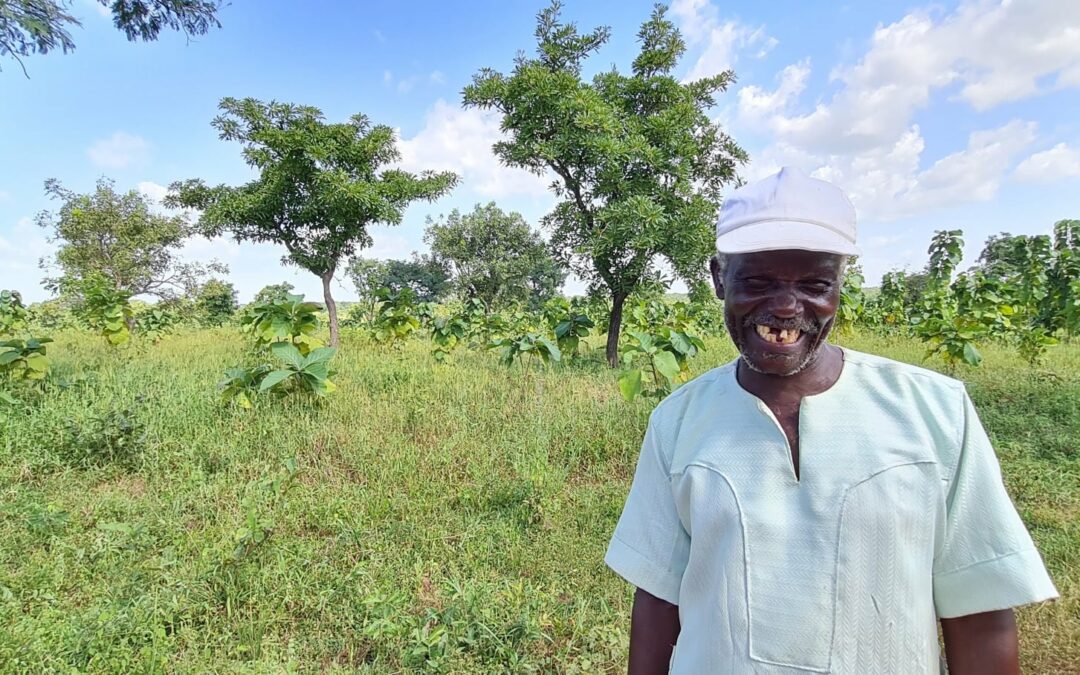By Regreening Africa-CRS Ghana
Mr. Emmanuel Lag is 70 years old and used to teach in Kukpalgu, a farming community in the Mion District of Ghana’s Northern Region. He is now retired. He is one of the few environmental enthusiasts in the district who has maintained a passion for tree care for decades.
A father of six, he used to work for the Christian Mothers Foundation, a sister organisation of Catholic Relief Services (CRS) that promoted tree planting and conservation, in the mid-1980s. While working for the National Disaster Management Organisation (NADMO), he became interested in agroforestry. It was during this time that he became aware that deforestation was the root cause of many natural disasters, including floods and windstorms, particularly in the northern region.
After his service, he went back to his home village and decided to use his time and energy to teach the people there about climate change and how important it is to plant and grow trees. He started with a nursery, which has since grown into a tree farm. He began by teaching regreening practices such as grafting, composting, and conservation agriculture, which he now offers to groups and organisations for training.
His tree farm (woodlot) is one of the largest in the region, with a wide variety of tree species such as teak, neem, mango, and shea, as well as cassia, mahogany, and Dawadawa (Parkia biglobosa). It covers 15 acres of land in Kukpalgu, where Mr. Emmanuel and his family live.
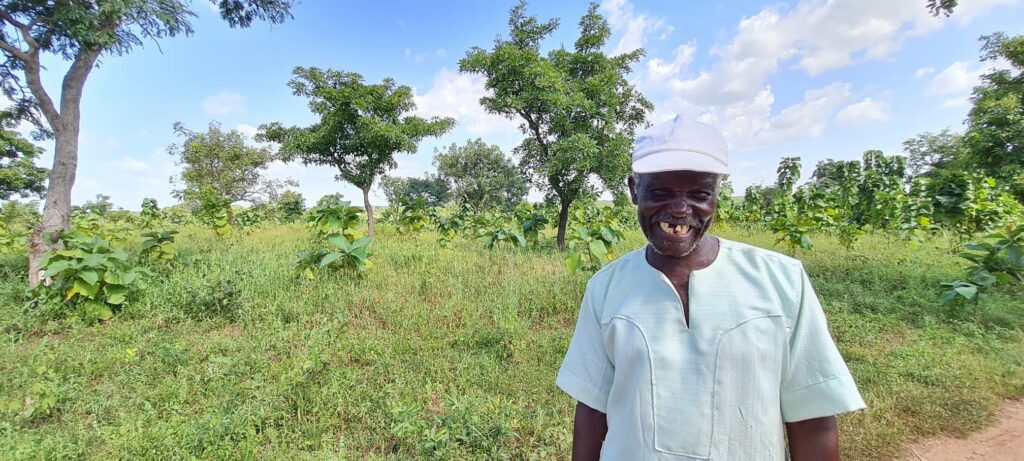 Mr. Emmanuel at his teak farm. Photo: Regreening Africa/Patrick Worms
Mr. Emmanuel at his teak farm. Photo: Regreening Africa/Patrick Worms
Mr. Emmanuel used his woodlot to hunt and get food for his animals, as well as to obtain rafters for his roof. Because there were no conscious management practices in place to capitalise on the site’s other potential, he was benefiting from the only gains he thought the woodlot could provide at the time. He only lived off what he grew on his farm and a few small ruminants he raised.
In 2018, Kukpalgu was added to the Regreening Africa Project as a beneficiary community. This took place with the help of the department of agriculture in the Mion District. Farmer Managed Natural Regeneration (FMNR) techniques were explained to people with their own woodlots and the community as a whole.
On Mr. Emmanuel’s request, his woodlot was visited, and FMNR techniques were shown to him. Excessive tree parts were pruned first because most of the tree branches were overgrown. Other techniques were later introduced, such as mulching, coppicing, and agroforestry. Due to his early adoption of FMNR and other management techniques, his woodlot began producing larger trees at a faster rate.
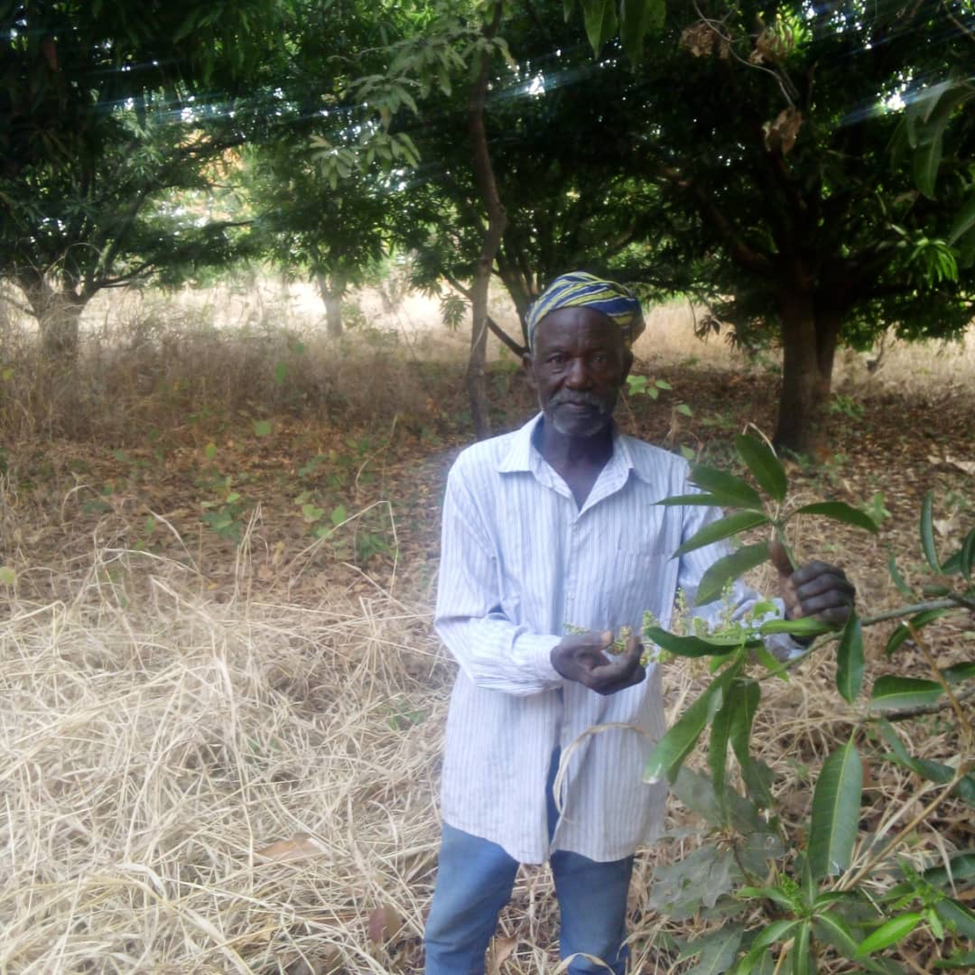 Mr. Emmanuel in his mango parkland. Photo: CRS Ghana
Mr. Emmanuel in his mango parkland. Photo: CRS Ghana
He now sells the majority of these trees as logs and roofing rafters. His house and a training centre he is building are both supported by rafters from his woodlot. He also hires women to help him harvest shea nuts when they are ready, and he pays them one-third of the amount collected per woman, which can be up to 2.5kg or more. He also uses the property to raise seedlings from seeds he collects on his farm and as a demonstration site for young people who want to emulate his efforts in tree and forest conservation.
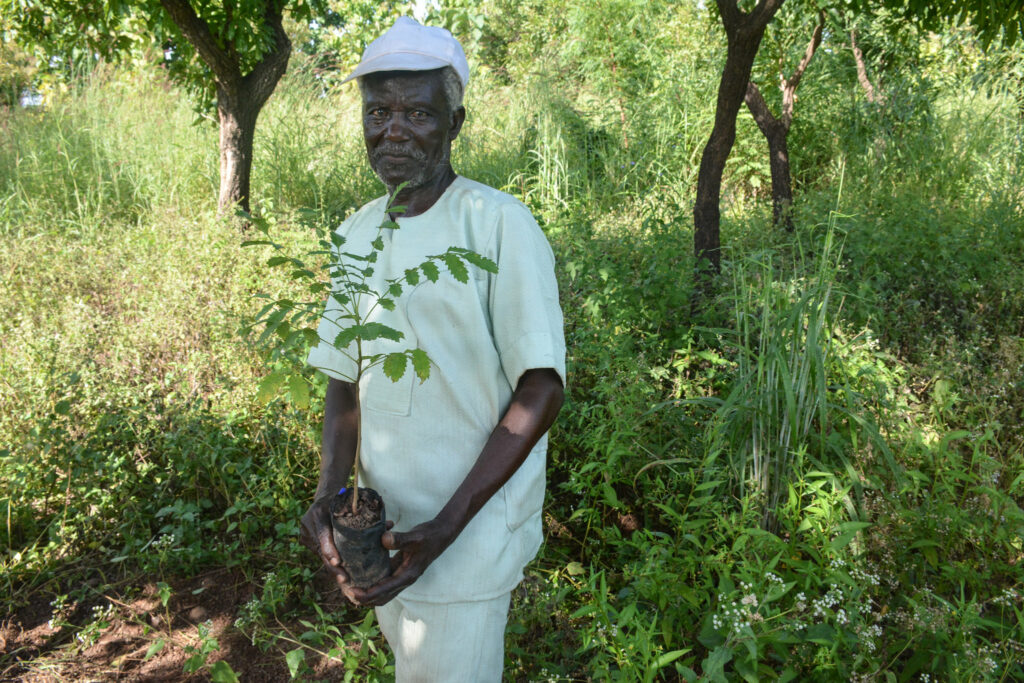 Emmanuel also grows tree seedlings from seeds collected from his farm. Photo: Regreening Africa/Patrick Worms
Emmanuel also grows tree seedlings from seeds collected from his farm. Photo: Regreening Africa/Patrick Worms
A fire volunteer group was put together to help control fires in the area and keep most of these protected sites safe. Emmanuel is heavily involved in the group’s training and mentoring. And because of his dedication to forestry, he was unanimously acclaimed and made a sub-chief in the community.
Other community members have expressed a desire to replicate these FMNR techniques on a larger scale. As a result, Emmanuel decided to establish a Savings and Internal Lending Communities (SILC) groups. Through SILC, members of the community organise into groups, pool their savings, and lend money to one another, thereby opening up new economic opportunities for them. Currently, there are six savings groups with a total of 250 members that serve as learning groups and ambassadors for the expansion of regreening practices.
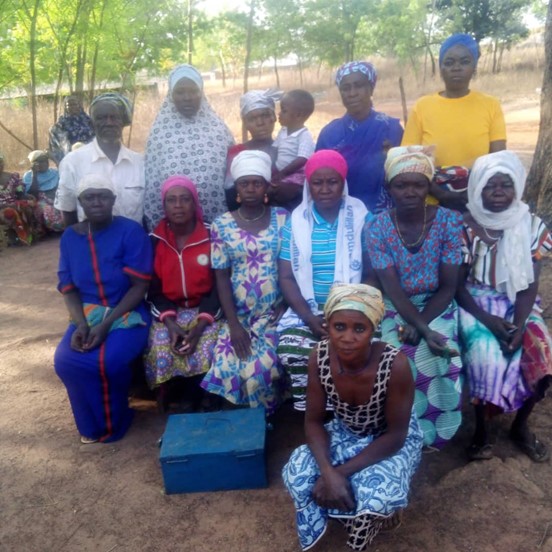 Some members of the SILC group at Kukpalgu. Photo: CRS Ghana
Some members of the SILC group at Kukpalgu. Photo: CRS Ghana
Mr. Emmanuel has also benefited from the SILC groups. He borrowed GHS 1,000 (approximately 90 USD) from the group to start a poultry farm in order to diversify his income, and now keeps native birds to meet the community’s preferences and demands.
Regreening Africa is a five- and half-year programme (2017-2023) funded by the European Union that seeks to improve livelihoods, food and nutritional security, resilience to climate change, and ecosystem services through evergreen agriculture. In Ghana, the programme is implemented by a consortium of international NGOs, including World Vision as the country lead and Catholic Relief Services (CRS) as implementing partners to the World Agroforestry Centre (ICRAF).
In Ghana, Regreening Africa addresses pressing challenges to the savanna areas, such as acute and prolonged dry seasons, overgrazing (livestock pressure), rampant bush burning, and indiscreet felling of trees, culminating in declining forest cover, loss of indigenous biodiversity, and decreased soil fertility. Regreening Africa’s goal for Ghana is to improve livelihoods, food security, and resilience to climate change among smallholder farmers and restore ecosystem services by scaling the practices of evergreen agriculture. Regreening Africa’s implementation plan for Ghana includes community mobilisation, radio campaigns, stakeholder capacity building, partner implementation of field activities, multi-stakeholder engagement, campaigns, and advocacy, and support for alternative ways to make a living. Regreening Africa has achieved notable success by training farmers in FMNR and bushfire management, introducing S4T interventions, and developing business plans.
This story was produced with the financial support of the European Union. Its contents are the sole responsibility of Regreening Africa and do not necessarily reflect the views of the European Union.

